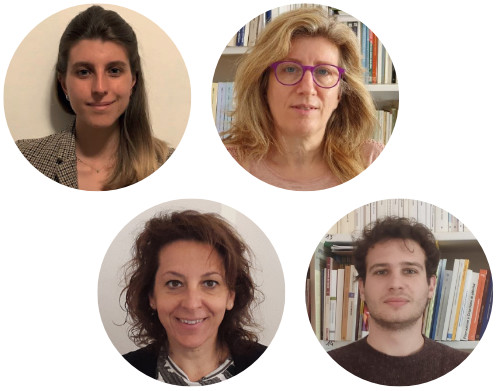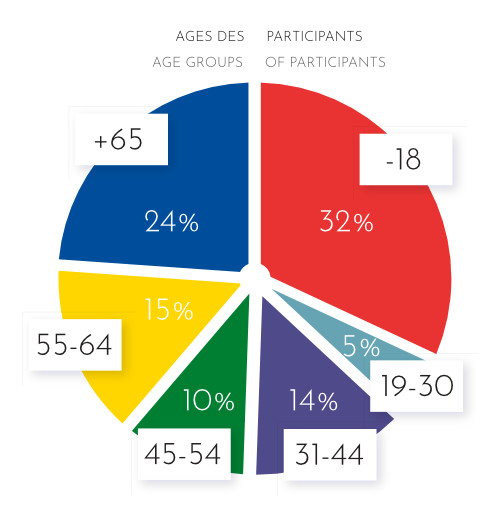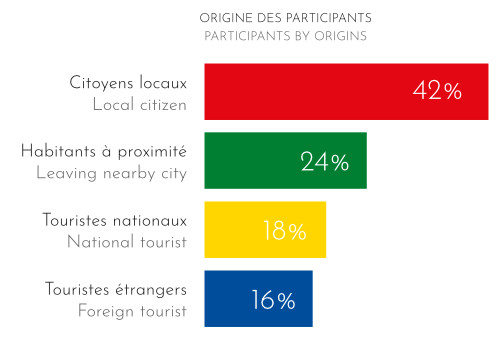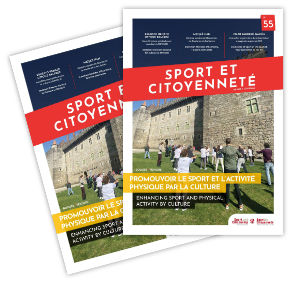What are the impacts for the SPACHE pilot programs?
 Emma Paladino, and her colleagues Flavia Pesce, Elena Ferrari and Francesco Sanguineti, researchers at the Istituto per la Ricerca Sociale (IRS – Italy), present the preliminary results of the social assessment study produced during the implementation of SPACHE’s pilot programmes.
Emma Paladino, and her colleagues Flavia Pesce, Elena Ferrari and Francesco Sanguineti, researchers at the Istituto per la Ricerca Sociale (IRS – Italy), present the preliminary results of the social assessment study produced during the implementation of SPACHE’s pilot programmes.
The four SPACHE pilot programs conducted in 2022 involved more than 400 participants from four countries: Portugal, Slovenia, the Netherlands and Italy. Children and adults, locals and tourists, had the occasion of participating together in different kind of physical activities, discovering the tangible and intangible heritage of the local territories in which the pilots’ implementation took place. Linen cultivation in Portugal, the landscape and cultural heritage of the Garda Lake region as well as a traditional Slovenian games and various Netherlands cultural locations were at the heart of the design of partners’ pilot-program.
The expected impacts of the activities mainly concerned the engagement of different target groups, both sports active or inactive. At the same time, physical activity was intended to be a leverage for getting to know the history, the tradition and the culture of the local territories. Additionally, the program aimed to increase the intergenerational exchange and the social cohesion of the territory.
Assessed through qualitative and quantitative research tools, the social impact of the pilot programs was measured by the IRS. This assessment consists in analysing, monitoring, and managing the intended and unintended social consequences of planned social interventions. Its primary purpose is to learn from problems or even failures as well as from success.
Prior to the implementation phase, the IRS conducted bilateral meetings with the implementing partners. Subsequently, after activities were launched, a questionnaire was submitted to participants to collect data on their profile, their satisfaction with respect to the activities and the perceived impact of the program. At the end of the implementation phase, IRS carried out semi-structured interviews with the project partners to understand the mechanisms behind the success of the pilots, the lessons learnt and the good practices for future activities.
 Which participant profiles?
Which participant profiles?
During the implementation of the pilot, the partners collected 319 questionnaires from adult participants and 130 from children (specific activity for children was organized in Portugal and Italy). Women represent 63% of the respondents of the overall sample of adults, with some heterogeneity across countries. However, in every pilot program the participants were mostly women. 32% of the participants were under 18 years old, and 24% over 65 years old. The remaining age groups are quite balanced, except for young adults (19-30 years old), that seem to be underrepresented.
Most participants consisted of citizens from the territory, both from the location where the activity was carried out (42%) and from nearby (24%). The remainder is made of tourists, evenly balanced among national and foreign. The capacity of the pilot programs of attracting international tourists should be highlighted as an important strength of the project, especially in the perspective of community exchange and social cohesion among people from different places.
The discovery of cultural heritage was a primary motivation. The main reason behind the pilot’s participation was the opportunity of discovering a territory’s cultural heritage while practising a sporting activity (62%).
Observing the overall satisfaction, more than 90% of the participants reported to be “very satisfied” with respect to the pilot activity. The elements that the participants liked the most were related to the organization of the activities, and suggestions on how to improve and extend the pilot were given to the partners. Another crucial positive aspect was the relationship and the exchange between different generations, also enforced by the participation of families. Indeed, the pilot represents an occasion for many inactive people to practice again physical activity in an inclusive and safe environment.
Additionally, the co-design of the activities through a dialogue with different actors, public institutions and other local stakeholders was highlighted as crucial. It allowed the partners to offer activities that were respectful of the needs of the local territory, without creating harm to local communites and to the environment.
“A capacity of attracting international tourists”
Summing up the preliminary results, the implemented pilot activities generated positive impacts on the physical well-being of the population, especially for what concerns inactive people, from both the local communities and from other territories. The promotion of the cultural heritage, both tangible and intangible, represented also an important occasion for different population groups to meet wIth the final aim of fostering social cohesion. The cooperation between actors and the sustainability of the implemented activities should be the best practices on which further projects will be based, scaling up the SPACHE experience to additional territories and communities.

Sport and Citizenship 55 : enhancing sport and physical activity by culture











 MEMBERSHIP
MEMBERSHIP CONTACT
CONTACT FACEBOOK
FACEBOOK